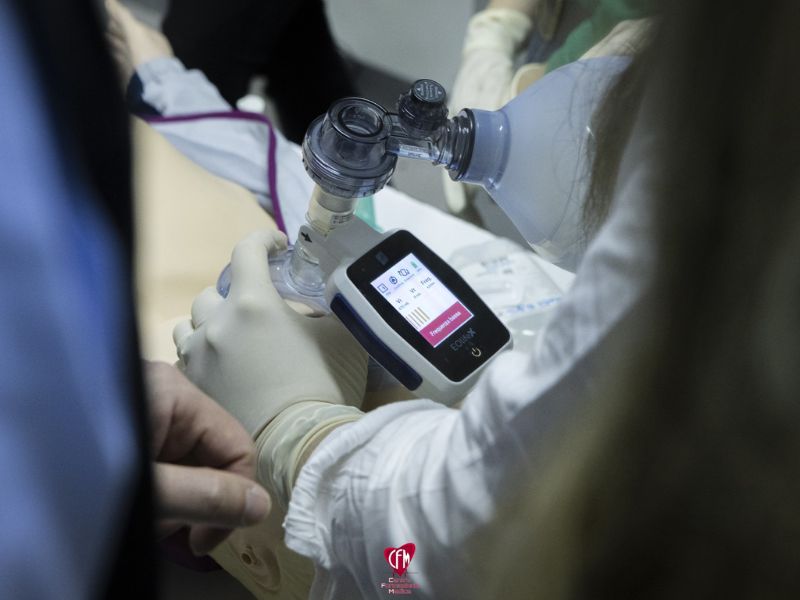
Improving the qualities of ventilations during CPR
The ventilation maneuver during cardiopulmonary resuscitation (CPR) is a complex intervention influenced by various factors related to the patient, the operator, and the environment
Researchers have highlighted the importance of objectively and reliably measuring the quality of ventilation during CPR through a scientific study
The objective of the study, conducted by Dr. Fausto D’Agostino, an anesthesiologist resuscitator at the “Campus Bio-Medico” Policlinic in Rome, in collaboration with Prof. Giuseppe Ristagno and Professors Felice Eugenio Agrò, Claudio Ferri, and Dr. Paolo Petrosino, was to evaluate the accuracy in assessing ventilation competence acquired by participants during an advanced cardiopulmonary resuscitation course (ALS). The activity was initially assessed by course instructors and subsequently confirmed by measurements obtained with a feedback device (EOlife®, Archeon Medical).
The study, published in the international journal Resuscitation, allowed ALS instructors to evaluate both the ventilation skills of the learners based on subjective criteria (manikin chest rise, ventilation frequency) and according to objective criteria through the feedback device.
Candidates underwent two 2-minute simulation scenarios of CPR maneuvers: one involving bag-mask ventilation with a compression-ventilation ratio of 30:2 (C:V) and the other through airway management with an endotracheal tube with continuous chest compressions and 1 ventilation every 6 seconds (CCC+asynV).
According to instructors’ evaluations, all 20 candidates acquired adequate ventilation competence in terms of both frequency and delivered volume (VT). However, data measured by the feedback device showed ventilation parameters not aligned with current guidelines, with a higher average VT (772±107 ml in 30:2 C:V and 657±54 ml in CCC+asynV) and a lower average frequency (8± 1 min-1 in CCC+asynV). Specifically, less than half of the candidates provided ventilations with correct frequency, and only 5% with correct VT in 30:2 C:V cycles, while in CCC+asynV cycles these percentages were only 10% and 5%, respectively. No differences in ventilation quality were observed when the data were stratified by physicians and nurses or by the number of cardiac arrests treated per year (< 5 vs. 5-10 vs. > 10).
High-quality ventilation during CPR is a skill whose acquisition begins with effective training during ALS courses. The ability of instructors to accurately and objectively assess participants’ ventilation maneuvers during course simulations, providing timely corrections if necessary, is crucial for developing applicable skills in real-life CPR scenarios. However, feedback devices are now available that can effectively serve this purpose, and their use during ALS courses should be encouraged rather than relying solely on instructors’ subjective perception.
Sources
- Centro Formazione Medica press release


